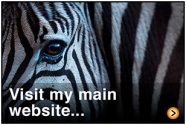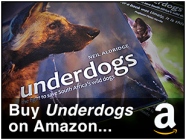
Okay, so my first meeting with Peter Neville overlooking the mighty Limpopo didn’t quite have the historical gravitas of Stanley’s famous meeting with Livingstone on the banks of Lake Tanganyika in 1871 but that doesn’t make it an insignificant one. In 2009 I was in the Limpopo Valley photographing African wild dogs for my book Underdogs (a book that Peter has since penned the foreword for) and he was in the valley leading a safari with guests from all over the world. It was abundantly clear that Peter shared the same enthusiasm and passion for this Land of Giants as I. If his continuing support for African wild dog conservation efforts in the area didn’t prove it, then the fact that he returned each year with guests to share with them the splendour of this overlooked corner of Southern Africa certainly sealed the deal.
Thankfully, Underdogs and African wild dog conservation are not where our professional dealings ended. Our passion for the Limpopo Valley and mutual understanding of the importance of the Greater Mapungubwe Transfrontier Conservation Area have inspired us to combine our collective guiding skills with my wildlife photography experience and Peter’s knowledge of animal behaviour. As a result, we are proud to be able to announce our 2012 safari dates. A full itinerary and contact details are available on my main website.
Highlights of the trip include the chance to photograph many of the natural world’s true giants all in one valley – big cats, great herds of elephant, huge baobab trees, large birds of prey, the striking kori bustard (the world’s heaviest flying bird), the ostrich (the world’s largest bird), the massive eland (the world’s largest antelope) and the world’s tallest mammal, the giraffe. On top of that, the valley boasts a bird list of around 400 species.

The sandstone hills and ridges that line the valley are not only home to leopards and black eagles, they also bear the evidence of the valley’s rich bushman past through rock paintings and archaeological artifacts. We will be exploring these hills and working on elements of landscape photography while watching animals on the plains below. The African sun washes these sandstone rocks with a golden hue at sunrise and sunset and makes landscape photography a true pleasure at this time of year.
The Limpopo’s riverine forest supports great herds of elephant and our final destination hosts the greatest concentration of African elephant on privately owned land. The chance of seeing and photographing rare and endangered animals like the African wild dog also makes this a particularly special place to visit. So why not join us?

Visit my main website at www.conservationphotojournalism.com




























